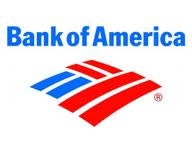Is Bank of America Corp (NYSE:BAC) facing tens of billions of dollars in legal liability above what it’s prepared to absorb? That’s the question making its way around the financial blogosphere over the last two weeks. And if you’re to believe the accounts, the answer to this question is “yes.”
The issue was raised at the end of last week in a guest post by Sunesis Capital’s Manal Mehta on the popular financial blog The Big Picture. It then gained momentum yesterday when the prominent bank analyst Mike Mayo of Credit Agricole released a report suggesting the same thing.

Mehta and Mayo are right … kind of. As I discussed at length in this series on B of A’s remaining legal liability, the so-called BONY settlement is a central piece of B of A’s legal strategy. The nation’s second largest bank by assets has already paid out more than $35 billion, excluding legal fees, to settle claims related to Countrywide’s malfeasance in the lead-up to the financial crisis. In addition, by my estimate, it still has somewhere between $15 billion and $25 billion in exposure beyond stated reserves that it needs to clean up before all is said and done.
This is assuming the BONY settlement is approved. If it isn’t, as Mehta and Mayo point out, the damages could be significantly higher. Of the $409 billion in mortgages that Countrywide securitized and sold to private investors between 2004 and 2008, a full $113 billion of them have subsequently either gone into default or are severely delinquent — that is, more than 90 days past due. This translates into roughly $30 billion in liability, according to an analysis of “some mortgage and account experts” cited by Mayo. That’s $21.5 billion more than the $8.5 billion that B of A set aside for the settlement.
If this is to be believed, then it’s safe to say that B of A is grossly under-reserved as Mehta and Mayo assert. However, there are two critical problems with their rationale. The first is semantic but extremely important. In accordance with applicable accounting guidance, banks set aside reserves for litigation and regulatory matters only when those matters present loss contingencies which are both “probable and estimable.” Thus, the fact that a bank faces liability beyond allocated reserves doesn’t necessarily mean that it’s under-reserved. It could mean that. But it could also mean that the loss contingency isn’t both probable and estimable. And in B of A’s case, it’s the latter explanation that seems to be most accurate.
It’s tempting to conclude that B of A must have steamrolled its adversaries in the BONY settlement. How else could the latter have agreed to accept only $8.5 billion in exchange for the release of $30 billion in legal liability? This conclusion, however, simply doesn’t square with the facts. Among the 22 institutional investors involved in the BONY settlement are BlackRock, Inc. (NYSE:BLK) and Pimco, two of the largest, most admired, most sophisticated financial firms in the world. According to Ralph Schlosstein, CEO of investment bank Evercore Partners Inc. (NYSE:EVR) (emphasis added): “BlackRock is one of, if not the, most influential financial institutions in the world.” With this in mind, B of A’s reliance on the BONY settlement to inform its reserve levels seems entirely reasonable. In fact, I’d go so far as to say that doing otherwise, as Mehta and Mayo suggest, may run afoul of accounting guidelines.




